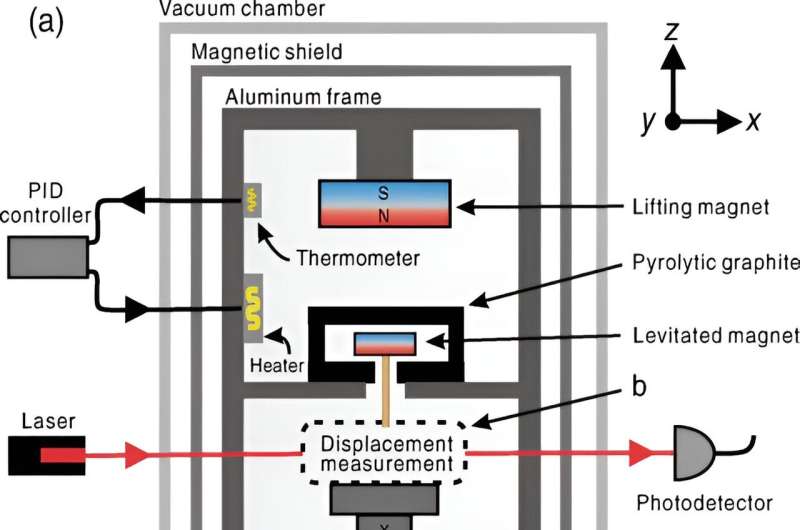March 27, 2024 report
This article has been reviewed according to Science X's editorial process and policies. Editors have highlighted the following attributes while ensuring the content's credibility:
fact-checked
peer-reviewed publication
trusted source
proofread
New design for a small, highly sensitive gravimeter that can operate stably at room temperature

A team of physicists and engineers affiliated with several institutions in China has developed a new kind of small, highly sensitive gravimeter that can operate stably at room temperature. In their project, reported in the journal Physical Review Letters, the group developed a dual magnet strategy that used a laser to measure changes in gravity.
Gravity measurement devices have existed for some time. Unfortunately, the two main types have drawbacks—those based on small oscillators tend to age quickly, resulting in loss of precision. And those based on superconducting materials require cold containers, which means they use a lot of power and are difficult to move around. In this new effort, the research team took a new approach.
They built a device with a large magnet inside a cabinet affixed to its top in the center. They then added a smaller magnet beneath it and housed it in a field-repelling graphite shell. The opposing magnetism caused the smaller magnet to levitate. The slight repulsion also resulted in vertical oscillations—adjusting the space between the magnets allowed the team to reduce it to just 1 Hz.
The team then added a wire that hung down from the bigger magnet—its movement, up or down, represented changes in gravitational pull. That movement was measured using a vertical laser that experienced varying degrees of intensity as it was blocked by the wire as it moved—measurement of such changes allowed for calculating the amount of gravity being experienced by the device.
The team tested their device by putting it in a vacuum chamber for several weeks, allowing it to settle. They then used it to take measurements of gravity from the moon and sun over the following five days. They then compared the results with predicted values and found their signal displayed oscillations that represented variations in gravitational acceleration of up to about 10−7 of the standard value, which they describe as highly accurate.
The team describes their work as a proof-of-concept device and suggests that further work would likely lead to refinement, which in turn should lead to even greater precision. They also plan to make the device more physically robust so that it can withstand being moved from site to site.
More information: Yingchun Leng et al, Measurement of the Earth Tides with a Diamagnetic-Levitated Micro-Oscillator at Room Temperature, Physical Review Letters (2024). DOI: 10.1103/PhysRevLett.132.123601
Journal information: Physical Review Letters
© 2024 Science X Network





















